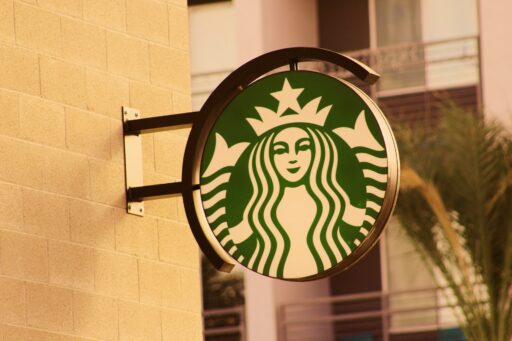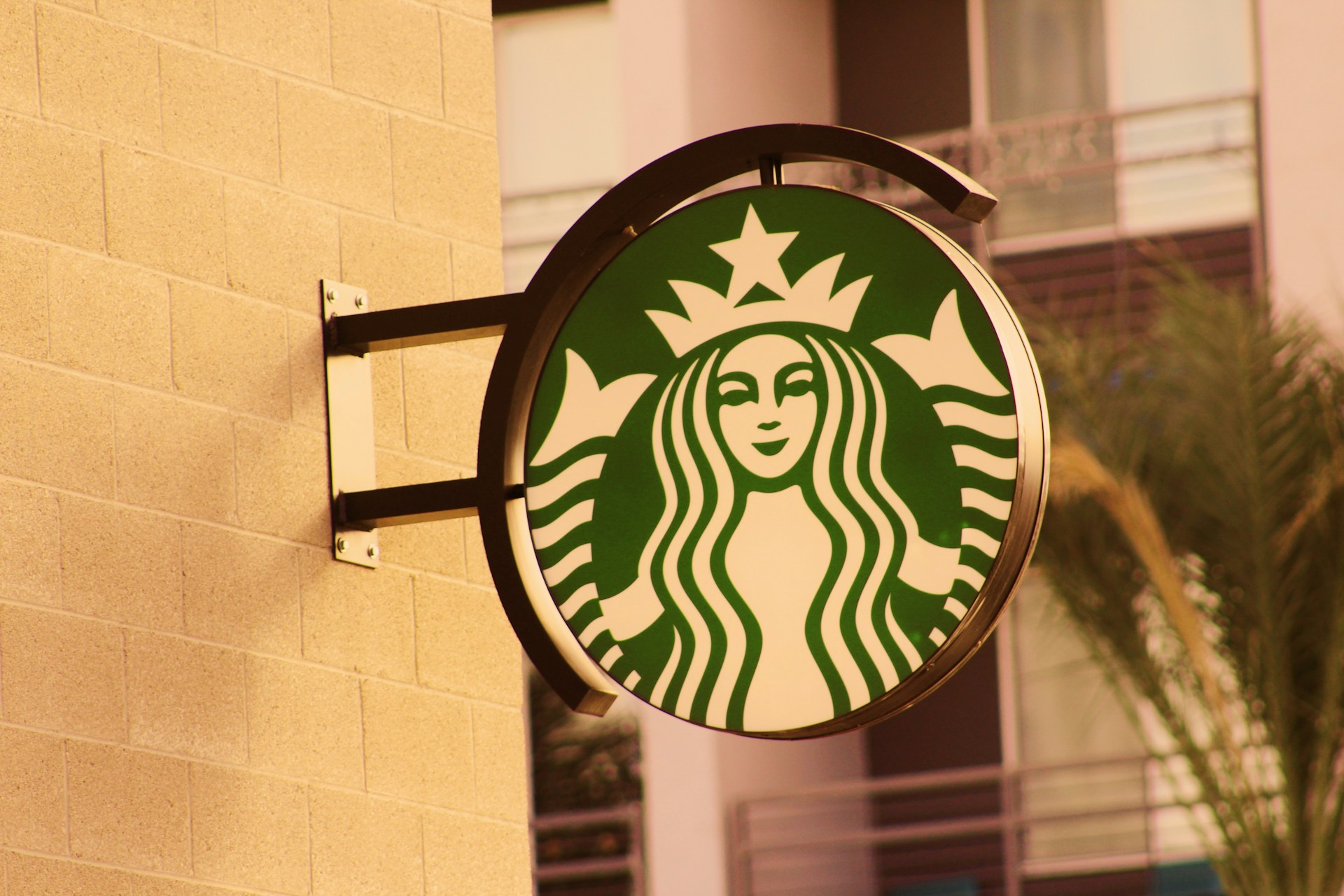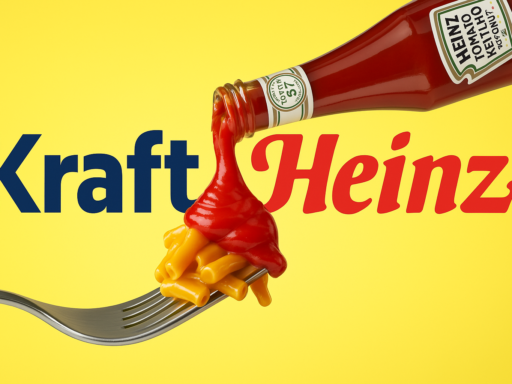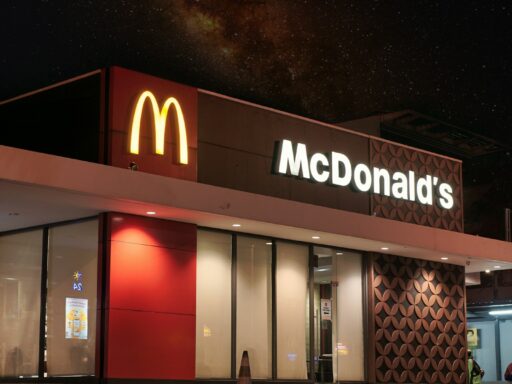Starbucks, the world’s largest coffeehouse chain, operates in over 80 countries with more than 35,000 stores globally. As a high-volume food and beverage retailer, Starbucks has a significant environmental footprint spanning coffee agriculture, water use, packaging waste, and retail energy consumption. Recognizing its impact, Starbucks has embedded sustainability at the heart of its business through its Planet Positive framework, which aims to give more than it takes from the planet by focusing on resource-positive operations, regenerative agriculture, and circular packaging.
In its most recent 2023 Global Environmental and Social Impact Report, Starbucks reaffirmed its commitment to become a resource-positive company—a goal that includes achieving net-zero carbon, conserving or replenishing more water than it uses, and reducing waste sent to landfills by 50% by 2030. With deep investments in sustainable farming, reusable packaging systems, and renewable energy, Starbucks is working to reshape the environmental footprint of global retail coffee.
Source: https://stories.starbucks.com/stories/2023/global-environmental-and-social-impact-report-2023/
Sustainability Strategy and Goals
Starbucks’ sustainability goals are centered around three core pillars: carbon reduction, water stewardship, and waste minimization. The company has set a target to cut carbon emissions by 50% across Scope 1, 2, and 3 by 2030, aligned with the Science Based Targets initiative (SBTi). This includes emissions from company-owned stores, transportation, supply chains, and customer use.
In agriculture, Starbucks has invested more than $150 million in farmer support and aims to source 100% of its coffee responsibly through C.A.F.E. Practices (Coffee and Farmer Equity). The company also has a goal to provide 100 million climate-resilient coffee trees to farmers by 2025 and expand its commitment to regenerative farming on 100,000 hectares of land.
On packaging and waste, Starbucks has committed to a 50% reduction in waste sent to landfills from stores and manufacturing by 2030, and to implement reusables in every store globally by 2025. For water, Starbucks aims to replenish 50% of water used in green coffee production and store operations in high-risk basins by 2030.
Source: https://stories.starbucks.com/press/2020/starbucks-sets-2030-targets-to-cut-carbon-water-and-waste/
Key Sustainability Innovations and Technologies
Starbucks has developed and piloted multiple sustainability innovations across its global retail footprint. In packaging, the company introduced Borrow A Cup programs in several markets, allowing customers to borrow reusable cups with a deposit. These programs have been tested in cities like Seattle, Tokyo, and London, with a global goal to make reusables available in every store by 2025.
In stores, Starbucks has deployed energy-efficient lighting, refrigeration, and HVAC systems, and is transitioning to renewable energy for 100% of its company-operated stores globally. Many of its stores now use Greener Store standards, integrating sustainable materials, low-emission equipment, and energy-saving systems. As of 2023, more than 3,500 Greener Stores have been certified, with a goal to scale to 10,000 by 2025.
The company also uses precision water meters and leak detection sensors in stores to reduce water use and loss. In coffee sourcing, Starbucks is leveraging blockchain technology and digital traceability tools to ensure ethical and environmentally responsible practices.
Source: https://stories.starbucks.com/stories/2023/starbucks-greener-stores-framework/
Measurable Impacts
Starbucks has made meaningful progress across its core sustainability targets. Between 2019 and 2022, the company reduced operational carbon emissions by 12% and achieved 100% renewable energy use in company-operated stores across the U.S., Canada, and Europe. Globally, 74% of electricity used by Starbucks in 2022 came from renewable sources.
In water stewardship, Starbucks implemented conservation programs in water-scarce regions such as Ethiopia and Mexico and improved water efficiency in stores by 30% since 2015. Through its One Tree for Every Bag campaign and supplier support programs, Starbucks has distributed more than 70 million climate-resilient coffee trees as of 2023.
In terms of packaging, more than 70% of Starbucks stores globally offer reusable cup programs, and single-use cup waste has been reduced by 8% in pilot cities with active borrow-and-return systems. The company has diverted over 60% of its U.S. store waste from landfills in markets with composting or recycling infrastructure.
Source: https://stories.starbucks.com/press/2023/starbucks-2023-global-impact-report/
Challenges and Areas for Improvement
Despite ongoing efforts, Starbucks continues to face several challenges. Scope 3 emissions, which make up the majority of its carbon footprint, remain difficult to manage, especially in areas like dairy production and customer beverage preparation. The company has acknowledged the climate intensity of its dairy offerings and is working to expand plant-based menu options to reduce downstream emissions.
Reusables adoption is also inconsistent across global markets. While some cities have embraced borrow-and-return models, many regions lack the infrastructure or customer behavior patterns needed to support reuse at scale. Similarly, recycling and composting access varies widely by geography, affecting the company’s ability to divert waste from landfills.
In coffee farming, economic resilience among smallholders remains a concern. While Starbucks has invested heavily in sustainability training and tree distribution, long-term soil regeneration, biodiversity tracking, and price equity need continued attention.
Source: https://www.starbucks.com/responsibility/environment/climate/
Future Plans and Long-Term Goals
Looking ahead, Starbucks is accelerating efforts to meet its 2030 targets and align with long-term net-zero ambitions. It plans to expand the Greener Stores framework to 10,000 stores globally by 2025, with smart energy systems and water-saving technology. The company will also increase its use of renewable thermal energy and explore electrified logistics in key markets.
Starbucks is investing in plant-based product innovation to reduce dairy-related emissions and shifting more promotional campaigns toward lower-emission options. By 2025, the company aims to make reusable cups the default option for customers through loyalty incentives, fee structures, and operational integration.
The company is also scaling its coffee traceability platform to cover all C.A.F.E. Practices certified farms, enabling detailed visibility into carbon, water, and social performance metrics. With its global footprint, Starbucks plans to continue pushing industry standards for ethical sourcing, packaging innovation, and consumer engagement on sustainability.
Source: https://stories.starbucks.com/stories/2023/2030-goals-progress-update/
Comparisons to Industry Competitors
Starbucks is a leader in sustainability among quick-service and food retail companies, though competition is intensifying. McDonald’s has also committed to net-zero emissions by 2050 and is scaling sustainable packaging and regenerative beef sourcing pilots.
Source: https://corporate.mcdonalds.com/content/dam/gwscorp/nfl/sustainability-report-2022.pdf
Nestlé’s Nespresso brand has achieved carbon neutrality for its coffee operations and is investing in agroforestry and capsule recycling.
Source: https://www.nespresso.com/impact
Costa Coffee (owned by Coca-Cola) is investing in electric vehicle fleets and reusable cup incentives across the UK and EU.
Source: https://www.costa.co.uk/sustainability
Starbucks leads in Greener Store innovation and traceable regenerative agriculture but needs to expand reusable infrastructure to catch up with local competitors in Europe and parts of Asia.
Our Thoughts
Starbucks has made strong strides in climate and packaging sustainability, with clear leadership in store design, coffee traceability, and responsible sourcing. Its bold targets, such as universal reuse programs and carbon reduction across the value chain, reflect a forward-thinking and science-aligned approach. The brand’s ability to engage both consumers and suppliers in environmental impact makes it a valuable force in the global sustainability movement.
However, the company must still tackle Scope 3 emissions more aggressively and address systemic challenges in recycling access and dairy-heavy beverage choices. If Starbucks can align its customer experience with climate goals—through reuse adoption, plant-based incentives, and digital engagement—it can become a global model for sustainable retail transformation.
Source: https://stories.starbucks.com/stories/2023/global-environmental-and-social-impact-report-2023/






